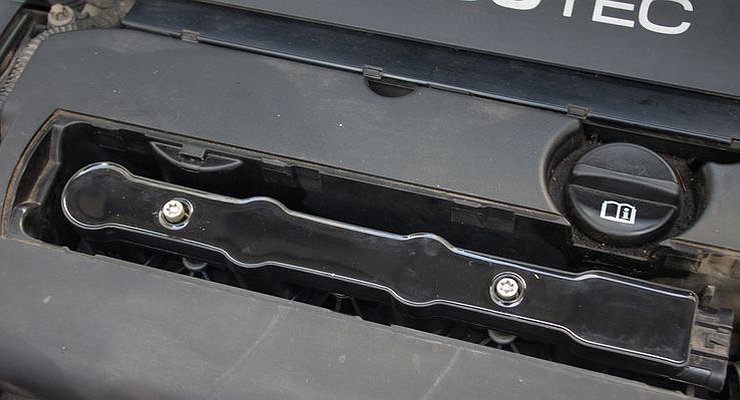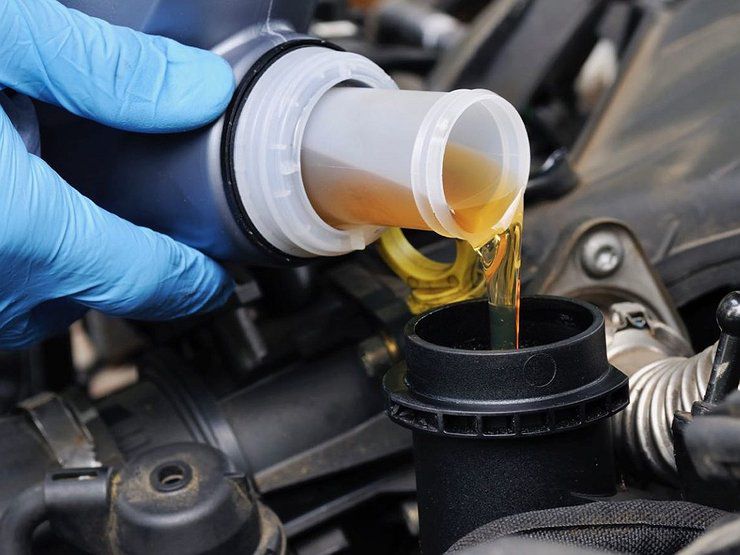What happens if you constantly add lubricant to the engine during an oil burn?
- June 16, 2022
- 0
With age, every car has problems. And one of them is the increased consumption of motor oil. This is due to many factors, but most motorists prefer not
With age, every car has problems. And one of them is the increased consumption of motor oil. This is due to many factors, but most motorists prefer not

Oil burner is a common problem in heavily used cars. The motor wears out, the moving parts wear out and of course the gaps between the rubbing parts get bigger. As a result, the engine begins to consume more oil than usual. However, drivers whose cars have similar problems are in no rush to fix it. Instead, they replenish a new load of lubricant. At the same time, there is an opinion that in this state of affairs there is no need at all to change the oil – after all, it is constantly being updated. Well, let’s look at the situation in more detail.
Not everyone has the opportunity to immediately take the engine and repair it or even replace it with a new one in the current conditions with spare parts. Yes, and also put down a large amount of money at once. That is why, in an oil burner, it is usually chosen to top up the lubricant. In addition, if you have to top up often and a lot, but when it comes time for car maintenance, some car owners decide not to change the oil, referring to the fact that they have added more lubricant during this period than is necessary to replace during maintenance. It seems there is logic in this – the oil is constantly being updated. If not for a few “buts”.
The point is that adding lubricant only partially updates the composition of the oil. But at the same time, the renewing effect is insufficient, if not completely fatal – additives in parts of the new oil will again wash away carbon deposits and deposits, but they all remain in the engine lubrication system. In other words, provided the oil does not drain and does not change, the effect of adding oil is completely zero – after all, all the dirt that has to be washed away from engine oil is collected in the crankcase and filter. And under certain operating conditions of the engine, such a mixture enters its working area. Further, it remains only to imagine how this substance is “useful” for the “heart” of the car.
In summary, therefore: the oil must in any case be changed in its entirety, as soon as the deadline has come, or the mileage measured by the automaker is approaching. The additives in the volume of the new lubricant effectively wash the engine from deposits. And the best way to remove the dirt on the bottom of the drive unit is to unscrew the drain plug and drain the dirty oil.
If the oil is changed instead of changed, the lubricant in the engine will always be old, with a changed quality composition that has no useful properties. And for a long time the engine will not be able to work on this broth – wear will increase. And then you have to spend even more.
SUBSCRIBE FOR EXCLUSIVE CONTENT
PORTAL “AVTOVGLYAD” IN TELEGRAM

Oil burner is a common problem in heavily used cars. The motor wears out, the moving parts wear out and of course the gaps between the rubbing parts get bigger. As a result, the engine begins to consume more oil than usual. However, drivers whose cars have similar problems are in no rush to fix it. Instead, they replenish a new load of lubricant. At the same time, there is an opinion that in this state of affairs there is no need at all to change the oil – after all, it is constantly being updated. Well, let’s look at the situation in more detail.
Not everyone has the opportunity to immediately take the engine and repair it or even replace it with a new one in the current conditions with spare parts. Yes, and also put down a large amount of money at once. That is why, in an oil burner, it is usually chosen to top up the lubricant. In addition, if you have to top up often and a lot, but when it comes time for car maintenance, some car owners decide not to change the oil, referring to the fact that they have added more lubricant during this period than is necessary to replace during maintenance. It seems there is logic in this – the oil is constantly being updated. If not for a few “buts”.
The point is that adding lubricant only partially updates the composition of the oil. But at the same time, the renewing effect is insufficient, if not completely fatal – additives in parts of the new oil will again wash away carbon deposits and deposits, but they all remain in the engine lubrication system. In other words, provided the oil does not drain and does not change, the effect of adding oil is completely zero – after all, all the dirt that has to be washed away from engine oil is collected in the crankcase and filter. And under certain operating conditions of the engine, such a mixture enters its working area. Further, it remains only to imagine how this substance is “useful” for the “heart” of the car.
In summary, therefore: the oil must in any case be changed in its entirety, as soon as the deadline has come, or the mileage measured by the automaker is approaching. The additives in the volume of the new lubricant effectively wash the engine from deposits. And the best way to remove the dirt on the bottom of the drive unit is to unscrew the drain plug and drain the dirty oil.
If the oil is changed instead of changed, the lubricant in the engine will always be old, with a changed qualitative composition that has no useful properties. And for a long time the engine will not be able to work on this broth – wear will increase. And then you have to spend even more.
SUBSCRIBE FOR EXCLUSIVE CONTENT
PORTAL “AVTOVGLYAD” IN TELEGRAM
Source: Avto Vzglyad
I’m Sandra Torres, a passionate journalist and content creator. My specialty lies in covering the latest gadgets, trends and tech news for Div Bracket. With over 5 years of experience as a professional writer, I have built up an impressive portfolio of published works that showcase my expertise in this field.